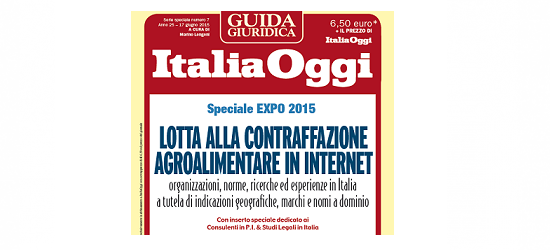
Natale Rampazzo, Lawyer – Borghese e Giordano Studio Legale Associato, Treviso
In the food sector, the production in accordance with natural methods is the equivalent of the originality of the brand in the domain of industrial property: as in the first case there is opposition towards genetically modified organisms, in the latter the protection scope involves the investment value inherent to a trademark and/or a sign consolidated in the business with a special character of reputation. The “opportunistically” modified trademarks affecting the financial environment of the legitimate holder of the original mark with the possible outcome of diverting significant clientele blocks because of the attraction effect of the well-known mark (used for linking with the competitor’s reputation) and misleading consumers with their damage. Apart from certain cases, the contemporary persistence on the market of marks likely to be confused is able to cause such disadvantages especially when the product sector is the same. The identification of the reference sector is critical for the recognition of the possible overlap of marks and is one of the analytical activities to be performed in the court decision in order to determine whether the products and services are intended to meet the same needs on the market and addressed to the same customers.
At the end of 2012, with sentence no. 3867, the Court of Appeal of Naples ruled on the counterfeiting nature of a de facto mark used by a tomato manufacturer, where emerges an altered form of another brand incorporating a reference not to vegetables but to fruit.
The case is interesting because it allows checking, on the one hand, the connection between the verbal or figurative element of a mark with the marked product, on the other hand, the methodology to be used by the judge in detecting counterfeiting. A common word (such as fruit or vegetables), suitable to describe the product, assumes particular importance in the context of the recognition of the brand strength, as it carries out a characterizing and individualizing function.
However, the Court of Appeal held that this word is not to be interpreted as generic, if it is used within a complex mark, as its component, in order to describe a product not properly fitting into the concept and the semantics suggested by the same word (eg. the mark tomato applied to apples).
It should be noted that the construction of a mark taking from the common vocabulary a generic name takes the risk not to achieve a distinctiveness able to make it original. The mentioned judgment declared precise principles, showing that the addition of a prefix or a suffix can convert an ordinary term in a unique one and confer to it a sense separated from the individual composing elements. Furthermore, it is not sufficient the mere change of a prefix in a mark to legitimize its use by another entity (the replacement of two phonetically similar letters, in a nine-letter word was not considered characterizing).
Also the application of figurative elements to a mark to which others are entitled is to be considered as abuse: consumers are, in fact, more easily attracted by the denominative part, that constitutes the dominant element of the communication process inherent to the products’ recognition and is simpler to be remembered.
The appreciation of the judge ought not to be not analytical as result of a detailed examination and separate consideration of each individual element but global and synthetic, having regard to all the main graphic and visual elements of the mark, by an evaluation based on ‘impressions’.
